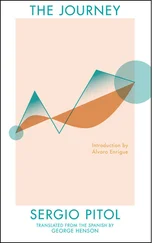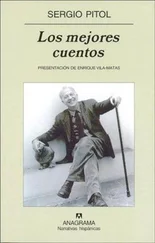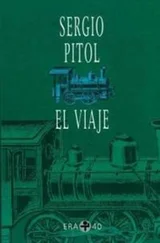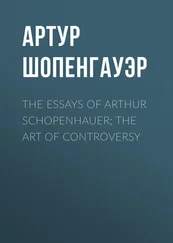1982
11 MAY (PASSING THROUGH MADRID)
As I walked through the city center this morning, I thought obsessively about the building where I live in Mexico, in Plaza Rio de Janeiro, and about my hypothetical novel…A character who was nine years old in 1942 returns thirty years later to visit the building where during his childhood a crime was committed that was never solved. He questions several tenants: his Aunt Hedwig, the bookseller Balmorán, the doorman; and thus the plot begins to take shape. An old German woman who never has visitors lives in the building. I’ll need to spend a few days locked in the archives…by the end, readers will have learned several things, all more or less trivial, eccentric, but the mystery will not be completely revealed to them.
12 MAY (IN MEXICO)
The story unfolds at the level of masks. The faces will never be seen. The biggest enigma lies in the identity of the protagonists.
12 JUNE
…a novel that isn’t a mere divertimento but a moral reconstruction of the period…Try to get the microcosm to shed some light on our present. A novel with a more or less hidden moral? No, thank you. Although, at the end of the day, why not take that risk? Attempt a search for the truth, a reflection on the past and its persistence over time. The conclusion is almost topical: the truth, the true truth of the truth, is not likely to be within our reach. We rely only on certain intuitions that allow us to approach it, perhaps to brush against it. Knowing a phenomenon only partially is as if we did not know it at all. However, it is impossible to conform and maintain a passive attitude. An ethical obligation requires us to continue our search. The building in Plaza de Rio de Janeiro becomes a house of Babel.
15 JUNE
…I’m thinking that a theme I tried to develop for several years in a short novel that I never managed to finish (the relationship between a brilliant mother and a timid and unsociable adolescent) will have to be incorporated into this novel. A celebrated hostess holds a dinner for a famous painter and his son who has just returned to Mexico after spending a couple of years or more in a boarding school in the United States.
17 JULY
…another parallel theme: a possessive mother, a possessive son. Widowhood. The mother falls in love again and is eager to remarry. The son sets out to undo the relationship. He embarks on a long trip with his mother through Europe. She begins to deteriorate, succumbs to morphine, becomes a nymphomaniac. Years later, on the skids, they return to Mexico. On the verge of death, she calls him, insults him terribly, and curses him.
1 SEPTEMBER
…the same old story. I abandoned the project about the house in Plaza de Rio de Janeiro to replace it with two stories, two variations of the relationship between mothers and children. I should attempt to summarize all the themes that come to mind into a single plot.
21 SEPTEMBER
Luis Prieto told an amazingly absurd and extraordinarily amusing story last night about a fake Mexican castrato from the nineteenth century that I am planning to develop. A chronicle of the life of the castrato would be the document that saves Pedrito Balmorán and creates panic in a family of whitewashed tombs that fear the revelation of family secrets.
1983
3 JANUARY
Silvia Molina lent me a stack of documents that belonged to her father. They detail the subversive activities of the German colony in Mexico during World War II.
18 NOVEMBER (PRAGUE)
I was officially invited, in my capacity as ambassador rather than writer, to the opening of an exhibition to celebrate the centenary of the birth of Egon Erwin Kisch, the famous interwar journalist. I attended. As I approached a display, I recognized the photo of a house. Of course, it was a house in the Roma neighborhood, located not far from Plaza Rio de Janeiro. Beside it there were photos of Kisch with famous people of the time: Diego Rivera, José Clemente Orozco, Carlos Chávez, Pablo Neruda, Dolores del Río; but beside them were a hodgepodge of international celebrities of every stripe: Buster Keaton, the wonderful Paulette Goddard, Orson Welles, Prince Drohojowski, the Soviet ambassador, Louis Jouvet, Jules Romains, Anna Seghers, and many other faces. Very elegant people beside intellectuals dressed in proletarian-looking jackets, actors, writers, communist leaders, countesses and princesses, Mexican intellectuals, Hollywood luminaries. A world of highly contrasting shades brought together in Mexico by the war. I can only imagine the degree of confusion such a divine galaxy of stars must have caused in a city as provincial as Mexico was at the time. A non-stop comedy of errors.
19 NOVEMBER
I entered the Café Slavia, sat at a table with a view of the river and the castle, and began to write my novel. I made a rough outline of the first five chapters.
20 NOVEMBER
Last night, I finished the full outline of my novel, and today I started filling in some details and incidents of some chapters. I need to decide the tone, the temperature of the language. But the heavy work, the novel’s carpentry, is already there. I made very detailed notes for one of the chapters: the scene in which Martínez, the blackmailer, seeks information about the past of the German Hispanist, Ida Werfel, and her family. Ida tells him about The Garden of Juan Fernández by Tirso de Molina, in which no one is who they are believed to be; the blackmailer takes it personally, an oblique reference to his secret activities, and flies into a fit of rage that drives him to the brink of madness… No one wants to talk about the German woman who lives locked in an apartment that has become a pigsty. “How do you expect me to know who he is? Do you think I’m the phonebook or something?” says Aunt Hedwig gruffly to the protagonist. “I haven’t wanted to know anything more about that building since I left it,” Delfina Uribe replies. “And you, what right do you have to question me?” Pedrito Balmorán shouts. “With all due respect, my rule is never to interfere in the lives of the tenants,” the doorman replies.
19 DECEMBER
Everything is working out so well for me, the novel is moving along so quickly that I fear it’s nothing more than an outbreak of graphomania. Tomorrow, I’ll start working on the chapter on Delfina Uribe.
25 DECEMBER
The structure is very simple. Gogol used it in Dead Souls : a stranger arrives at a place and begins to visit different people one by one to address a particular topic. The detective novel has used it almost from its beginning; many of the Agatha Christie novels are structured this way. Ambler’s splendid novel The Mask of Dimitrios is the perfect model. In the detective novel, the character who undertakes this journey and convinces people that they must open the door and answer his questions is a police officer or a private detective. Ambler uses a novelist who, if I remember correctly, is also a journalist. This makes his intrusion into private spaces and other people’s lives seem normal. I thought my character would be a journalist, then I turned him into a historian who’s researching a particular period: the World War as seen from Mexico.
1984
17 FEBRUARY
I spend hours reviewing the volumes of photos by the Casasola brothers in the embassy library. I’m able to see what people wore to the races, to the opera or, simply, to walk down the street. The entire Who’s Who of the period appears in these books. This allows me to visualize the characters.
17 JUNE (IN MOJÁCAR)
I’ve been in Mojácar for two weeks. I’m working from morning to night. I think that what breathes life into the novel is kind of cheerful expressionism, if such an expression is possible, resulting from many years of parodic games, improvisations, and a caricatured invention of reality practiced with Luis Prieto and Carlos Monsiváis; but also from certain effects from American movies of the thirties and forties, especially those by Lubitsch, and the later Italian movies, Fellini above all; from the constant reading of plays and their application in the construction of dialogue, as well as certain devices from opera in the creation of staging; the relationship between movement and the grouping of characters (solos, duets, quartets, with or without choruses, etc.) is also operatic. I should also cite the impulse born of a genre that I love, the comedy of errors, those by Tirso and Shakespeare, especially, and in the novel Our Mutual Friend by Dickens.
Читать дальше












